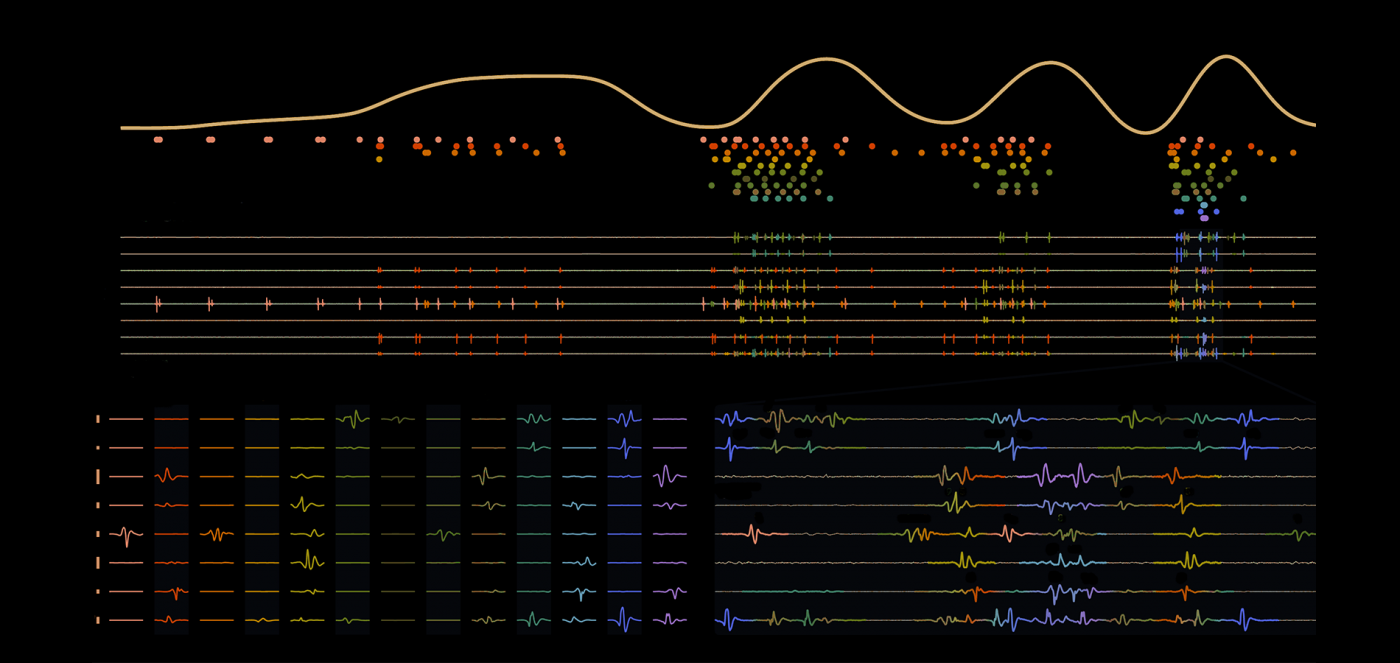NEW YORK – Moving an arm or leg in a rhythmic motion—cranking a handle, for instance, or pedaling a bicycle—is a feat of biological orchestration, as illustrated here in scientific data from a new study of movements made by animals.
The smooth line at the top tracks the changing forces exerted by muscles pushing on a handle. Electromyography measurements in the middle reveal the contractions of thousands of individual fibers within one of those muscles. At the bottom are magnified views of electrical impulses generated by nerve cells called motor neurons, each of which can stimulate around a hundred muscle fibers.
A foundational belief in the field is that the brain doesn’t need to command each one of the roughly 50,000 motor neurons that cause our muscle to contract. In this view, a given muscle is, for the most part, controlled holistically, with the few hundred motor neurons stimulating it receiving the same force-commanding drive from the brain.
The data here upend that simple perspective. First author Najja Marshall, who recently completed his PhD, found that animals quickly shifted which motor neurons they use when engaged in different movements. This selection of motor neurons could be influenced by stimulating the brain, suggesting that the brain has finer-grained control than previously thought possible.
This could provide a greater flexibility for optimizing movements. For example, the ability of a Tour de France competitor to complete a stage depends on both fast-twitch fibers that contract quickly but tire easily, and slow-twitch fibers that contract slowly but have greater endurance. The brain’s micromanaging of motor neuron activity likely allows it to fine-tune the balance of fast- and slow-twitch fibers used when pedaling at different speeds. Doing so could not only increase efficiency but allow the brain to more accurately generate the exact force profile it desires.
See the October 10 issue of Nature Neuroscience to read more about this research, from the labs of Mark Churchland, PhD; John Cunningham, PhD; Larry Abbott, PhD; and Michael Shadlen, MD, PhD.


